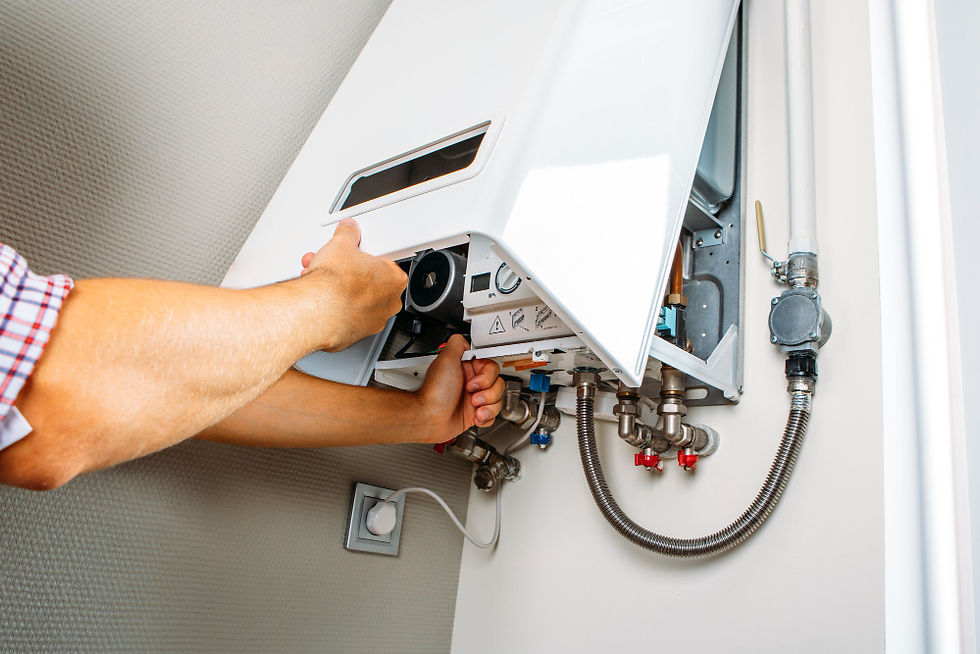How Long Does it Take to Repair a Furnace?
- hvacmilehi
- Apr 16, 2024
- 3 min read
Updated: Apr 23, 2024

When your furnace breaks down, it can throw your home into chaos, especially during the cold months. Understanding how long it takes to repair a furnace can help you plan accordingly and minimize disruptions. In this comprehensive guide, we'll delve into the various factors influencing furnace repair times, common repair scenarios, and tips for expediting the process.
Understanding the Complexity:
Furnace repair times can vary significantly based on the complexity of the issue. Minor problems such as a malfunctioning thermostat or a clogged air filter can often be resolved relatively quickly. However, more complex issues like a faulty igniter, a defective blower motor, or a cracked heat exchanger may require more time to diagnose and fix.
Diagnostic Phase:
The first step in repairing a furnace is diagnosing the problem. It typically involves a thorough inspection by a qualified HVAC technician. The technician will examine various components of the furnace, run diagnostic tests, and troubleshoot to identify the root cause of the issue.
Depending on the complexity of the problem, the diagnostic phase can take anywhere from 30 minutes to a few hours. During this stage the technician will suggest whether your furnace can be repaired or you need furnace replacement.
Parts Availability:
Once the problem has been identified, the next factor that influences repair time is parts availability. If the required furnace replacement parts are readily available, the repair process can proceed smoothly.
However, if specialized parts need to be ordered, they may take some time to arrive. The repair process may be delayed by several days or more, depending on the supplier's shipping times.
Repair Process:
Once all necessary parts are on hand, the repair process can begin. The length of time it takes to repair a furnace depends on the issue's complexity and the technician's skill level. Simple repairs, such as replacing a faulty sensor or tightening loose electrical connections, can often be completed within an hour or two.
However, more extensive repairs, such as replacing a blower motor or repairing a cracked heat exchanger, may take several hours or even an entire day to complete.
Testing and Calibration:
After the repairs, the furnace must undergo testing and calibration to ensure it is functioning correctly. It involves running the furnace through a series of tests to verify that all components are working properly and that the unit is heating the home evenly and efficiently.
Depending on the complexity of the repairs, testing, and calibration can take anywhere from 30 minutes to a few hours. If it the issue is not resolved, you need total furnace replacement
Factors That Can Expedite Repair Times:
While furnace repair can sometimes be time-consuming, there are steps you can take to expedite the process:
1. Schedule Regular Maintenance: Routine maintenance can help identify and address potential issues before they escalate into major problems, reducing the likelihood of unexpected breakdowns.
2. Choose a Reputed HVAC Contractor: Work with a reputed HVAC contractor having experience repairing furnaces and access to quality parts. A skilled technician can diagnose and resolve issues more efficiently, minimizing downtime.
3. Communicate Clearly: Provide detailed information about the symptoms your furnace is experiencing when scheduling a repair appointment. It can help the technician diagnose the problem more quickly and accurately.
4. Be Proactive: If you notice any unusual sounds, smells, or performance issues with your furnace, don't wait until it breaks down completely. Addressing minor issues promptly can prevent more significant problems down the line.
While the time it takes for furnace repair can vary depending on several factors, understanding the process and being proactive can help minimize downtime and restore comfort to your home more quickly. By scheduling regular maintenance, working with a renowned e HVAC contractor like MileHi HVAC, and communicating effectively, you can ensure that your furnace stays in optimal condition and performs reliably for years.



Comments